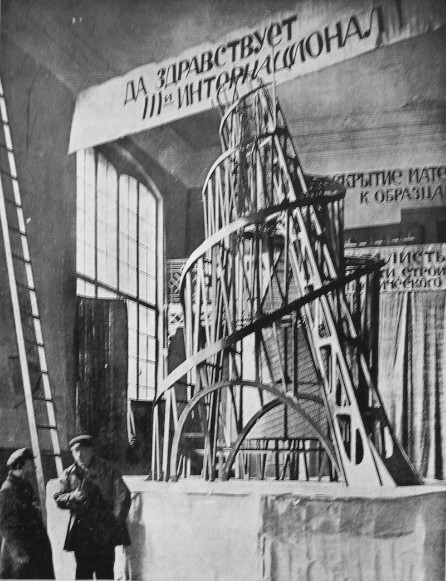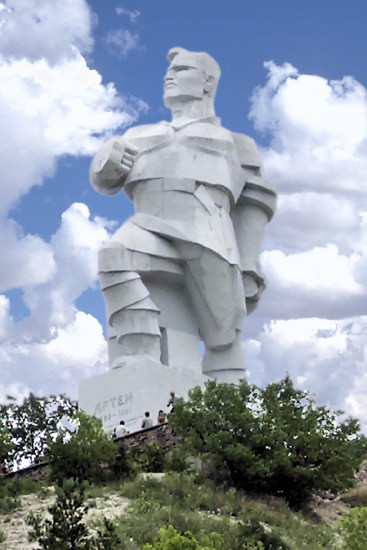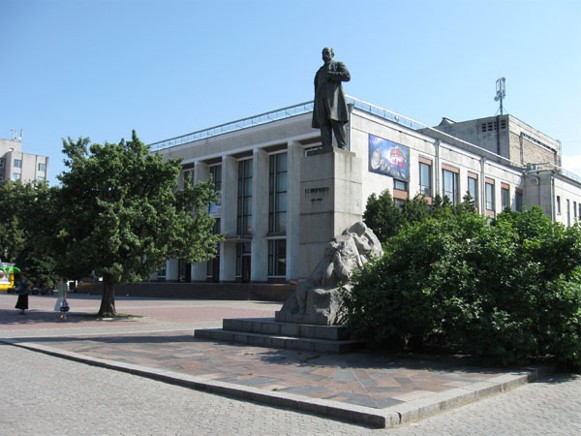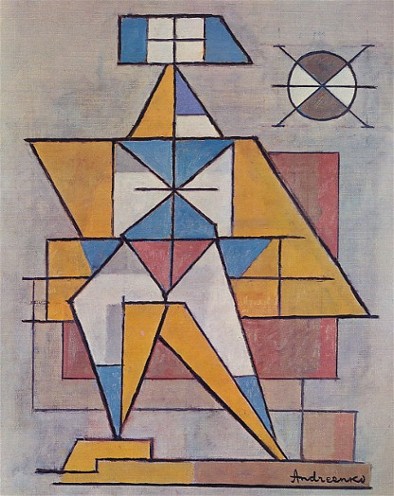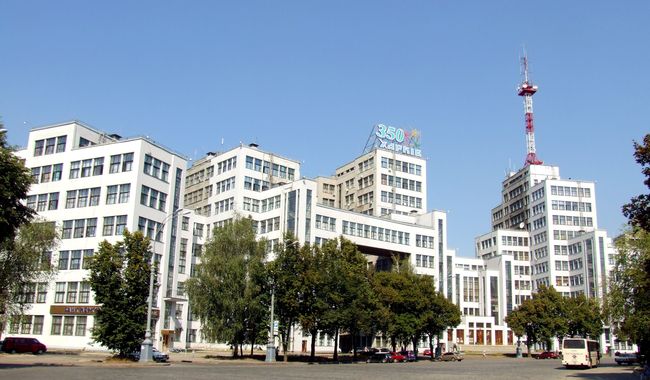Constructivism
Constructivism [конструктивізм; konstruktyvizm]. Artistic movement based on the principle of functionalism and favoring mostly simple geometric forms. In architecture constructivism emphasizes the structure itself and the building materials (reinforced concrete, metals, glass) and avoids decoration. In Ukraine constructivism was popular after 1920 and manifested itself in a series of factorylike buildings: the Building of State Industry and the Projects Building (1925–9, designed by S. Kravets and S. Serafimov), the Post Office (1927–9, by A. Mordvinov), and the Railwaymen's Club in Kharkiv; the Palace of Culture in Kadiivka; the Palace of Labor in Dnipropetrovsk (now Dnipro), the Dnipro Hydroelectric Station, and so on. After the war a number of buildings in the constructivist style were built, mostly in Kyiv: the Dnipro Hotel (1960), the Sports Palace (1960), the Boryspil airport (1965), and the complex of apartment buildings on Rusanivka Island (1963–6); Tarasova Hora Hotel in Kaniv (1961), the Shevchenko Theater of Music and Drama in Cherkasy (1965); the Ukraina Cinema and Concert Hall in Kharkiv (1963); the Suputnyk Theater in Dnipropetrovsk (1963); and a large number of palaces of culture throughout Ukraine.
In painting, constructivism uses abstract combinations of lines, objects, and colored planes. The first constructivist artists in Ukraine were Alexander Archipenko, Kazimir Malevich, A. Ekster, and Mykhailo Andriienko-Nechytailo. The influence of constructivism and cubism is evident in Ivan Kavaleridze's monuments to Fedor Artem (1923–4 in Artemivsk (Donetsk oblast) and 1927 in Sviatohirsk) and to Taras Shevchenko (1926 in Poltava). Constructivism was adopted most widely in stage design. In the 1920s and at the beginning of the 1930s it was the dominant style in the theaters of Ukraine. Its main exponent was Vadym Meller and his students—Dmytro Vlasiuk, Mylitsa Symashkevych, and others—at the maquette workshop of the Berezil theater. Other prominent stage designers who worked in this style were M. Matkovych, V. Miuller, and Yurii Pavlovych at the Odesa Derzhdrama; Borys Kosariev, at the Kharkiv Chervonozavodskyi Ukrainian Drama Theater; Heorhii Tsapok at the Kyiv Ukrainian Drama Theater; and Anatol Petrytsky, Oleksander Khvostenko-Khvostov, and Ivan Kurochka-Armashevsky at the Kyiv Theater of Opera and Ballet, the Kharkiv Theater of Opera and Ballet and the Odesa Opera and Ballet Theater. Constructivists took an architectural approach to graphic art and used various scripts. Vasyl H. Krychevsky, Pavlo Kovzhun, Vasyl Yermilov, H. Tsapok, Vladimir Tatlin, Leonid Khyzhynsky, and Olena Sakhnovska were among those known for their graphics.
In literature, elements of constructivism can be found in the poetry of the early Yevhen Malaniuk and Mykola Bazhan, Oleksa Vlyzko, Geo Shkurupii, and other authors of the Nova Generatsiia futurist group. Another literary group, organized by Valeriian Polishchuk, Avanhard (Avant-garde) (1926–9), proclaimed the ideas of constructivism, dynamism, ‘machinism’, and ‘spiralism’.
In music, constructivism was manifest in the works of Borys Liatoshynsky, Borys Yanovsky, Antin Rudnytsky, Mykhailo Verykivsky (in part), and others. In 1932 constructivism was declared in the Ukrainian Soviet Socialist Republic to be ‘nationalistic’ and harmful. Yet, because of its purely technical approach and skillful use of building materials, constructivism survived and developed in Soviet architecture, particularly after the cult of Joseph Stalin and the pseudoclassical style of architecture encouraged by him came under criticism.
Sviatoslav Hordynsky
[This article originally appeared in the Encyclopedia of Ukraine, vol. 1 (1984).]
